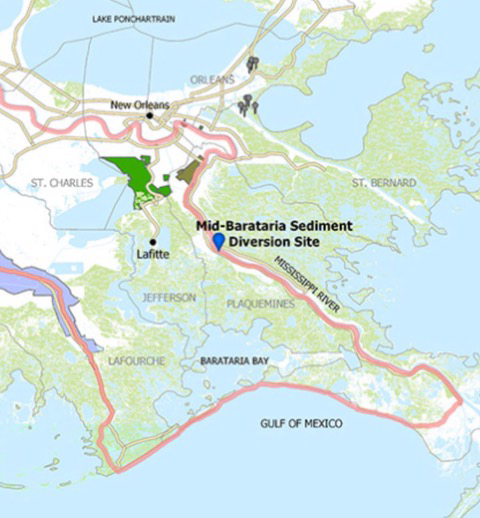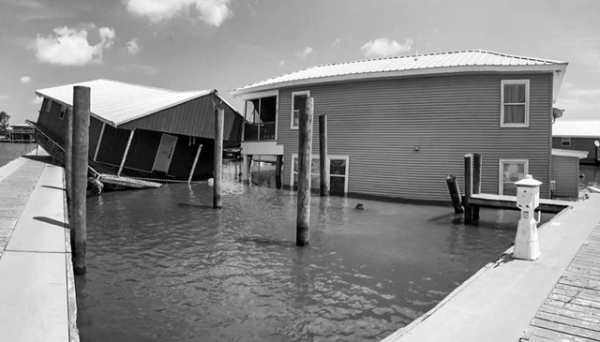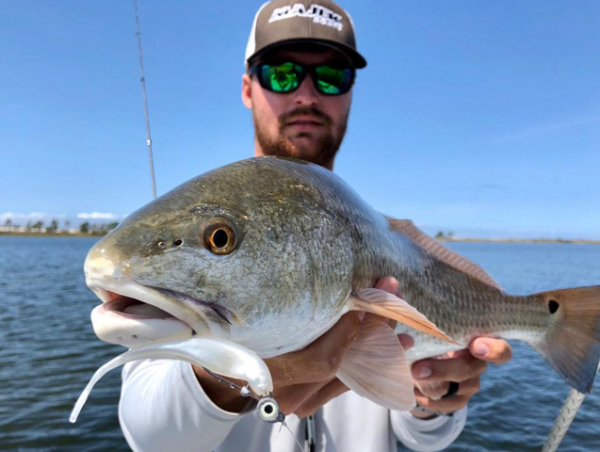Depending on who you ask, Louisiana’s Mid-Barataria Project is either the greatest environmental restoration effort in the history of the planet (though Florida Everglades restoration advocates might disagree) or the dumbest idea since letting six-year-olds pick their own gender.

The state just broke ground on the Mid-Barataria Sediment Diversion—one of America’s largest and most expensive habitat restoration projects to date—to breathe life back into a critical Gulf Shore basin and promote long-term fishery health of the legendary Mississippi Delta.
While the area still produces great inshore fishing and spectacular offshore fishing, most long-time observers degree, it ain’t what it used to be.
Many of the brackish redfish, flounder and trout producing bayous, lakes, and bays have been washed away or flooded in the last 25 years, with Hurricane Katrina among the worst of the continuing destruction. Scientists say over 100 square miles of coastal wetlands have been destroyed here in the last three decades, and close to 430 square miles in the last 100 years.

The Solution: More Flooding
Oddly, engineers say the best solution to the flooding is . . . more flooding.
The Mid-Barataria Sediment Diversion will reconnect the Barataria Basin to the Mississippi River a little over 10 miles south of New Orleans
The diversion will breach the river levee to allow up to 75,000 cubic feet of water per second out of the river and into the marsh, where it will flow naturally south and recreate the vast marsh and bay country as it did for millions of years before the USA was even a concept.
The mud-rich waters of the big river will soon start to rebuild marsh land and islands, geo-engineers say, and the influx of nutrient may also eventually trigger new growth of brackish species, though considerably farther south toward the Gulf.
The Price Tag and Funding
The price tag is estimated at an $2.9 billion, almost all covered by the great cash cow of the last decade, penalties levied against BP and others for environmental damages caused by the 2010 oil rig explosion.
Work is getting underway now, and the diversion is expected to be complete around 2028. How long it will be after that before the marsh begins to show positive effects remains to be seen. Advocates say one large benefit will be reducing inland flooding if/when another Katrina-sized storm hits the Delta.
Impacts to Residents
But fishing guides, fish camp owners, shrimpers, oystermen and other commercial fishermen say that it will be for sure a disaster to their livelihood, as billions of gallons of fresh water pour into the brackish backwaters where trout and reds are now caught and where baby shrimp and many other saltwater species are hatched.

While the Delta is vast and will have many other brackish marsh areas and bayous remaining outside the influence of the Barataria Diversion, the people who have their operations in the zone to be reflooded will assuredly suffer a significant loss, and will probably have to relocate to continue in business. Quite a few of them live close to the affected area, so may have to seek new homes as well as they shift fishing operations. Most of these folks are far from rich—picking up and seeking a new homestead will be a life-changing hardship.
Fishermen have always had to go where the fish are, to be sure, but the people who hate the idea of being pushed out of their home turf by a Big Government operation have some justifiable complaint.
Those of us who have enjoyed recreational fishing in the basin may also have some regrets, though for those who do it for sport, it’s obviously more of an inconvenience than a life-changing ordeal—and the rest of the Delta will not be affected—we hope.
In any case, the diversion is coming. The good results it promises are many years down the road, but this may be the first of many similar projects that will be deemed necessary if the Delta Country is to survive during this extended period of subsidence of the land and rising of the seas.
-- Frank Sargeant
Frankmako1@gmail.com